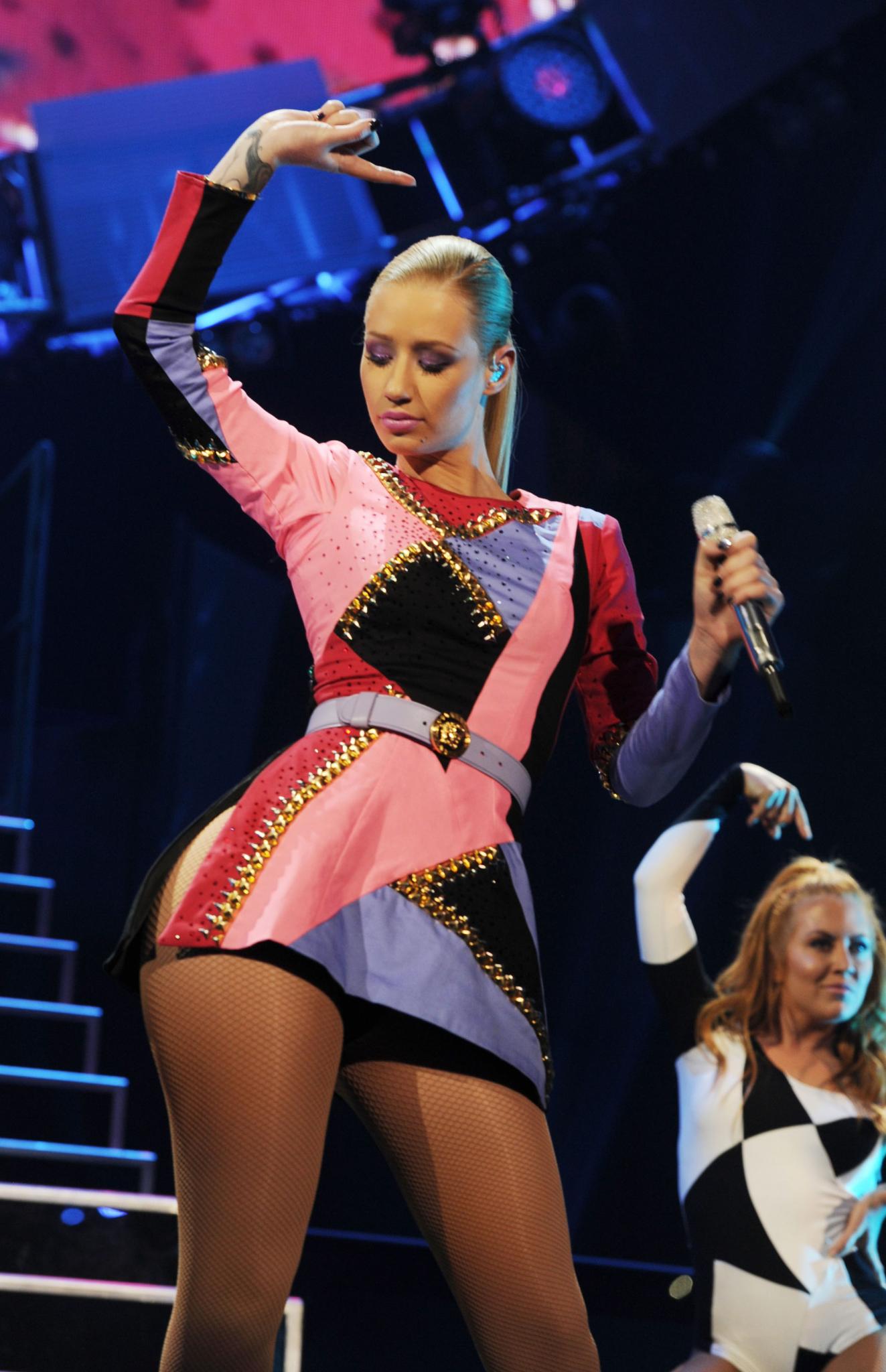
This article originally appeared on the Philadelphia Inquirer site.
Something about the models walking the DKNY catwalk last month in coifs that Lucky magazine called “slicked-down tendrils” – known in my hood as baby hair – tweaked my Queens-reared soul.
I felt a similar pull in April when Marie Claire called Kendall Jenner’s cornrows “epic.” Hmmph – no one ever declared mine anything but necessary for swimming in the summertime.
That tug was followed by a twinge last week when Los Angeles Times reporter Ingrid Schmidt wrote a story about braids, referring to Bo Derek as their matriarch. Hello, what about Cicely Tyson?
Add Vogue‘s recent article claiming we’re in the era of big booties – because Iggy Azalea and Kim Kardashian are making round backsides aspirational for the masses – and you might as well render me invisible.
My issue isn’t with borrowing elements of style that started in the heart of black America. Appropriation has been at the center of pop culture since well, the dawn of culture.
What’s difficult to digest is this “praise” of all things black – from cornrows and large booties to acrylic nails, door-knocker earrings, and tribal fabrics – only becomes “chic,” “trendy,” and “epic” when worn by white women. When these same cultural markers are on black women, they are “ghetto,” “urban,” and “ratchet” – meaning, unpretty.
“It’s offensive,” said Doreen E. Loury, director of Pan-African studies at Arcadia University. “The natural beauty of black women that has been historically demonized and classified as unattractive, is now the runway’s hottest new swag. And it’s not even being celebrated on black bodies.”
To make matters worse, black women are rarely, if ever, credited as these trends’ impetus. That distinction goes to the designers’ inspiration boards, so what could have been viewed as a form of flattery is now just an insult.
“What’s problematic to me is how these conversations, whether braids or butts, are happening without the broader social context from where they came,” said Tiffany M. Gill, associate professor of black American studies at the University of Delaware. “When braids are on black bodies, they are dangerous or subversive, but celebrated as fashion on white bodies.”
Last week New York Times writer Alessandra Stanley wrote an article calling actress Viola Davis, with her darker skin, “less classically beautiful,” and there were a lot of hurt feelings. Who’s making these calls? Why is darker skin desirable on white women, but not on black women?
All these hairdos, body types, and even accessories are pieces of our collective style stories as African American women. Although some are things we neither celebrate nor denigrate – cornrows – others we continue to struggle with, like the texture of our hair. Having now hit the runways, it’s only a matter of time before other women start copying these looks – but stripped of their history.
(For the record, “baby hair” is the hair at your hairline. Through the decades, in an effort to mask their hair’s natural texture, black women have used gel, pomade, even Vaseline to slick down the edges. In the ’80s, black teens made the gelled hair fashionable, said Ayana Byrd, coauthor of Hair Story: Untangling the Roots of Black Hair in America.
Even I first thought I was being oversensitive, having grown up at the dawn of hip-hop with parents who remember segregation. But it turns out that even millennials – in this “post-racial” society – feel disrespected.
“To me it’s as if the industry is making a mockery out of what we call ‘ghetto,’ ” said Isaiah Wall, a 21-year-old blogger from North Philly, who writes “The Timeless Aesthetic.” Wall was referencing an online editorial published last week by Vice magazine with a photo of two white women eating watermelon with obscenely long acrylic nails.
“Givenchy for men showed guys with do-rags [in August]. The baby hair at DKNY. These little things were once seen in a negative light, and now it’s OK because it’s been whitewashed,” Wall said.
In this age of quick blog posts and quicker social-media updates, I think the problem is more indifference than insidiousness. The fashion industry is only doing half the work. Yes, designers are inspired by the streets, but which ones? Shibuya Crossing in Tokyo, or 52d Street in West Philly?
“What’s so disturbing is that there is just no attribution to the original,” said Nakia Thomas, 34, who writes the “Stylechile” blog.
Coincidentally, in many cases, it’s social media – especially sharp-tongued black Twitter – that’s correcting the spate of style-based cultural faux pas.
Numéro magazine bronzed the body of a 16-year-old Caucasian model Ondria Hardin for a spread titled “African Queen” – back in early 2013. But a recent Facebook post about it went viral, bringing renewed attention to the irony: At a time when black models are fighting for jobs on the runway and in editorials, we’re putting white models in blackface.
While Numéro apologized at the time, Vogue has yet to do so. But thanks to the recent #voguearticles hashtag where people suggest the next-in-line appropriation – my personal favorite, “Dreadlocks: Apparently not just for white hippies and backpackers anymore” – perhaps they will do a little more research next time.
Elizabeth Wellington is the fashion columnist at the Philadelphia Inquirer.







